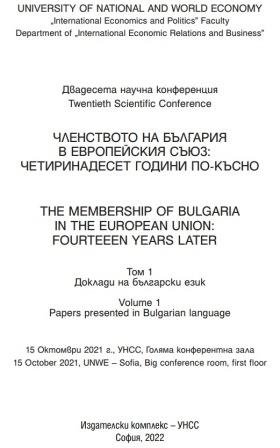Еврозоната: от концепцията за финансова стабилност до реалността на дефицити и дългове
The Eurozone: From the Concept of Financial Stability to the Reality of Deficits and Debts
Author(s): Vasil Gechev
Subject(s): Economy, Supranational / Global Economy, Public Finances
Published by: Университет за национално и световно стопанство (УНСС)
Keywords: Optimum Currency Areas; Economic Convergence; Eurozone; Budget Deficit; Government Debt
Summary/Abstract: The eurozone was created with the goal of economic convergence between its members. The Maastricht Treaty defined four convergence criteria – price stability, sound government finances, durability of convergence (measured by the long-term interest rate), and exchange rate stability. This paper analyses the developments during the 1999-2020 period in the field of sound government finances, as it is the only convergence criterion which continued to apply after eurozone membership and is by far the most important element of financial stability in the eurozone. According to the Maastricht framework, eurozone members are supposed to keep their annual budget deficits within 3% of GDP and their total government debt below 60% of GDP. In practice, the budget deficit threshold has been frequently exceeded – even by the largest economies in the eurozone – and as a consequence nowadays only a minority of eurozone members have government debt levels below 60% of GDP. It would not be an exaggeration to suggest that the financial framework of the Maastricht Treaty has been severely compromised: in 2020, the debt levels of nearly 1/3 of the euro area countries were well over 100% of GDP – even reaching 155.8% in the case of Italy, and 205.6% in the case of Greece.
- Page Range: 22-35
- Page Count: 14
- Publication Year: 2022
- Language: Bulgarian
- Content File-PDF

